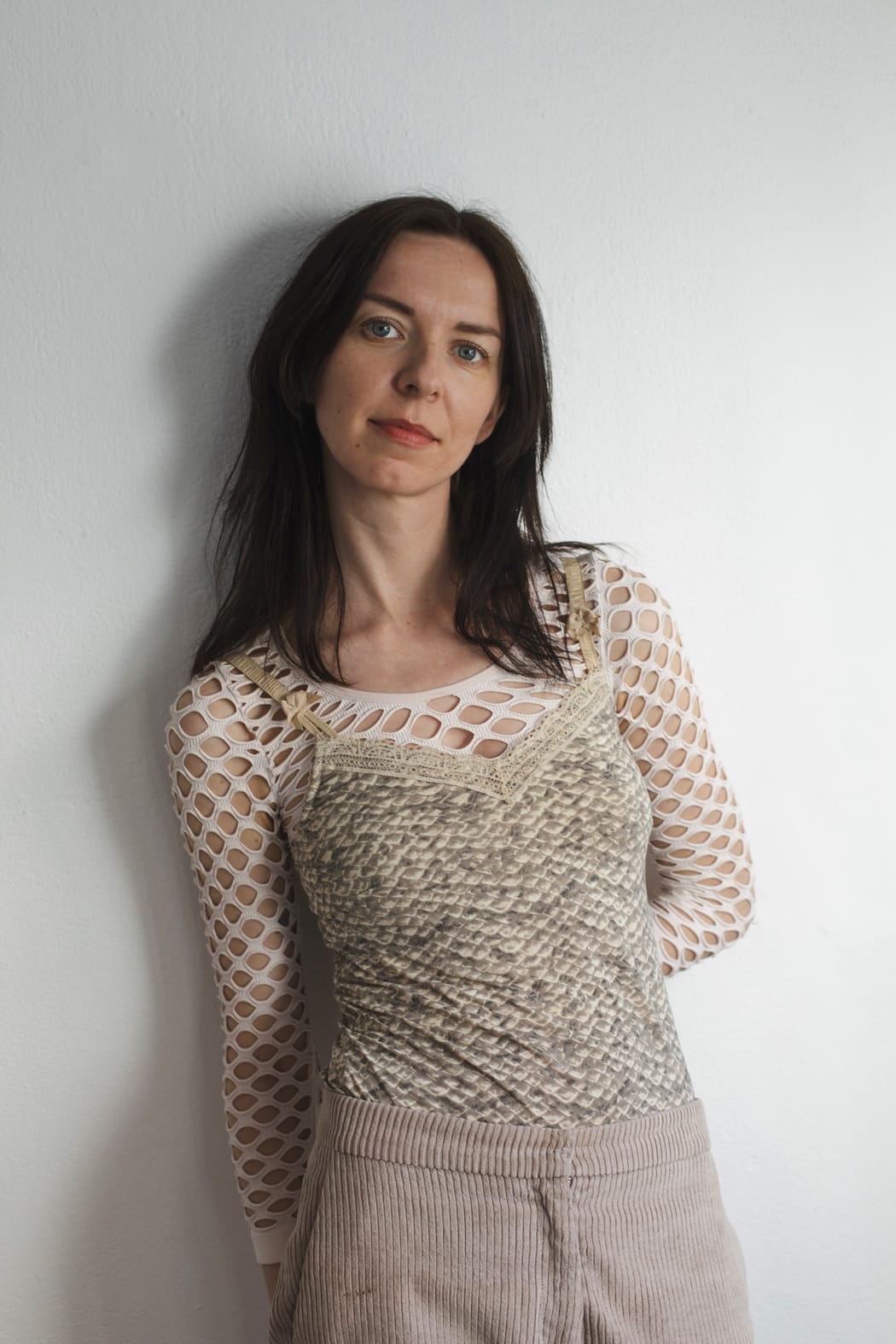 Portrait of Clara Busch. Courtesy of the artist and OTP Copenhagen. Photo by Paula Duvå.
Portrait of Clara Busch. Courtesy of the artist and OTP Copenhagen. Photo by Paula Duvå.
OTP: What aspects of bodily experience are most interesting to you to explore in your practice?
CB: I’m very interested in touch. It’s somewhat on the outside and the inside at the same time, and this fascinates me emotionally and visually. I find inspiration in relational experiences with the people in my life including that which is invisible in these relations or rendered invisible. Moments when we feel connected to others are interesting to me, both physically and emotionally, but so are the darker, more complex emotions, such as shyness, grief, loneliness and shame. “Basic” body-experienceces as birth, intimacy and adolescence, are also wild to me, and things I think a lot about, I think they go way beyond being banal.
The word aspect can be understood as some kind of a synonym for perspective, or point of view. I hope these drawings point towards looking inward, into the body and mind, but at the same time outward, into the environment. This duality feels crucial to me. Perhaps it’s something about the desire to connect with others or one's surroundings? I feel that these drawings make you feel balanced and disorientated at the same time – to me, a huge part of having a body and a mind.
On a more concrete level I think, I’m more into anatomy than I would like to admit. I keep coming back to random images of the pelvis and uterus for example, to see what it actually looks like again and again. But also the breath and the chest which gave title to this exhibition. I often find myself looking at my family members to find out what our family traits actually are and stuff like that.
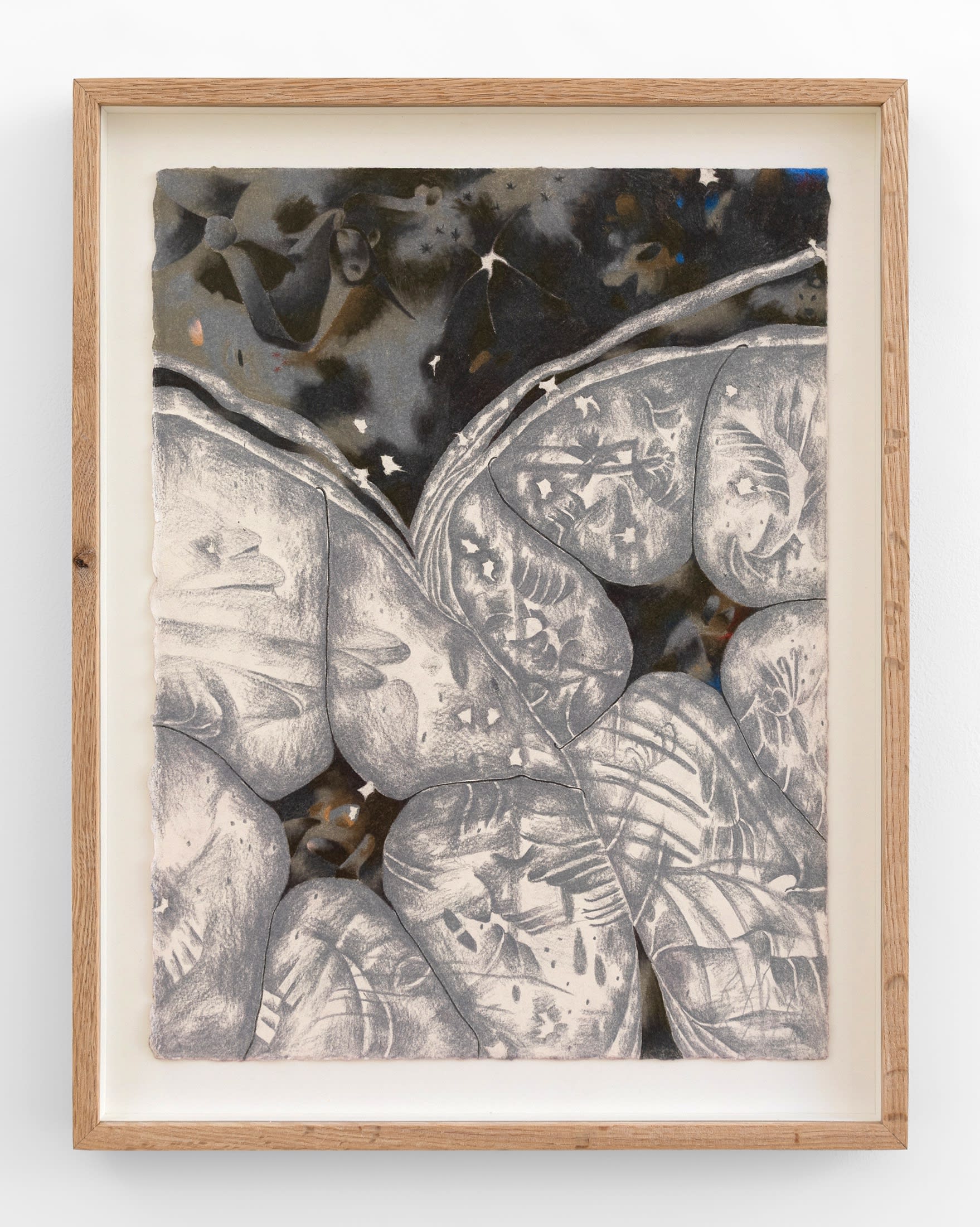 Clara Busch, Chests, 2025, pastel on paper, 44.7 x 34.9 cm / 17.6 x 13.8 inches [framed]. courtesy of the artist and OTP Copenhagen.
Clara Busch, Chests, 2025, pastel on paper, 44.7 x 34.9 cm / 17.6 x 13.8 inches [framed]. courtesy of the artist and OTP Copenhagen.
OTP: What is it about abstraction, that lends itself well to exploring the body and sensation?
CB: A big question! I think abstraction gives priority to emotional spaces over physical ones, which in my case opens up possibilities for more detailed emotional landscapes to appear, because they actually are given space to be there. I feel like abstraction can make space out of something that is not spatial, like emotions. I appreciate when there is an option for deep silence and wild energy to exist at the same time – abstraction offers me this.
Abstraction opens up what cannot be articulated in spoken/written language. While I have immense love and admiration for language and literature, visual art holds a different place for me. It’s not a better place, it’s just different. For me, visual art always addresses the feeling of being unable to fully express oneself. I don’t know if visual art is outside of language but it is definitely something else. This is what makes it so crucial for me, because it allows expressions in other ways than logical ones. I think I became an artist because I felt an inability to express myself, and I suspect I’m not the only artist who feels this way. I also think I like to write, because I feel an inability to express myself, it’s not connected to visual art only.
It might sound banal, but I believe that loneliness and powerlessness can, to some extent, be transformed through art. I think it might be something with allowing internal worlds to be visible or creating images where clarity and ambiguity can coexist – abstraction is a great “tool” for this. Abstraction of course also allows us to break free from fixed structures, rules, and conventions and offers a space where the non-obvious can come into focus. Fx the more intangible aspects of our existence: longings, fears, desires, dreams, sensibilities and so on. They become main actors in an abstract piece.
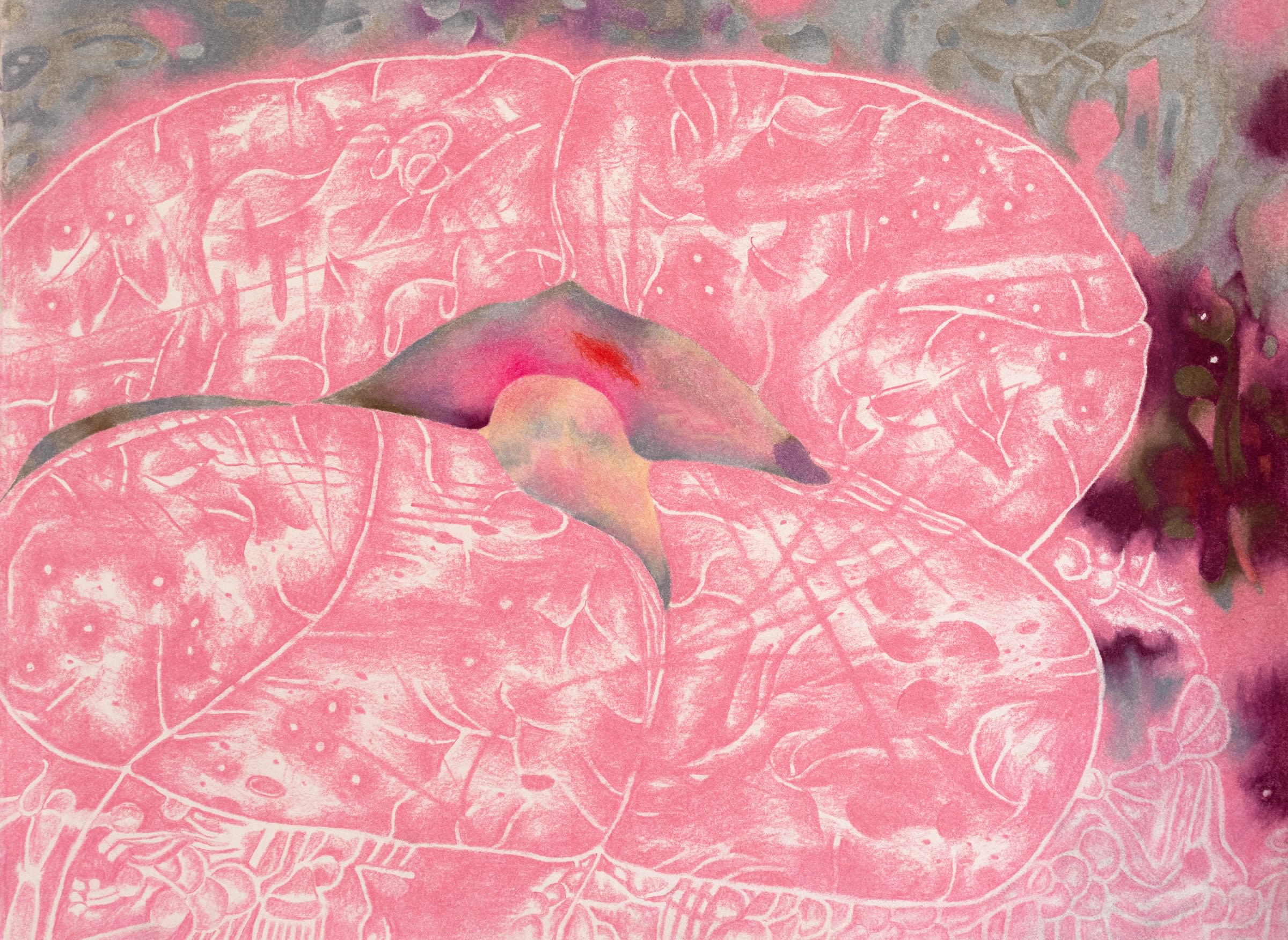 Clara Busch, Confetti Crush, 2025, pastel on paper, 34.9 x 44.7 cm / 13.8 x 17.6 inches [framed]. courtesy of the artist and OTP Copenhagen.
Clara Busch, Confetti Crush, 2025, pastel on paper, 34.9 x 44.7 cm / 13.8 x 17.6 inches [framed]. courtesy of the artist and OTP Copenhagen.
OTP: The works in the show are uniform in size and small in scale. What is it about this format that feels well-suited to the ideas you are interested in exploring?
CB: The smaller scale allows me to work directly on the table, instead of on the wall, which keeps me in an uninterrupted contact with the work. I appreciate both approaches, but when I'm working on the table, I remain intimately engaged with the piece. On the wall, however, I find myself stepping back repeatedly to view the work from a distance, creating a shift in my relationship to the piece and its details. The distance allows me to see the whole picture more clearly, but I think the details become more accessible when working on the table and therefore smaller in size. I enjoy that all these drawings are the same format, because it makes the sense of size itself disappear and the works can stand out in other ways than just being “the small one” or “the big one” or “the long one”.
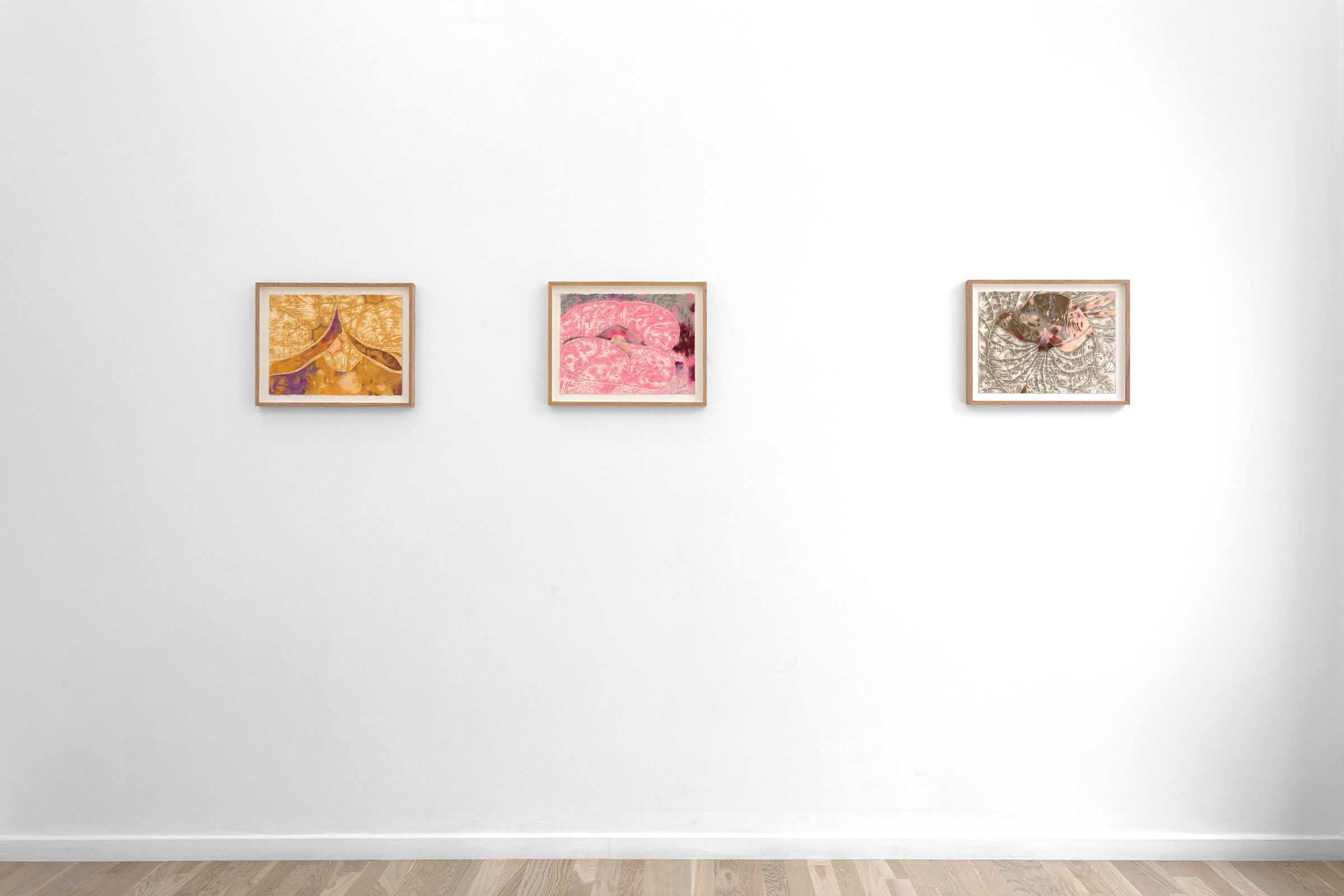 Clara Busch, Chests, installation view, 2025, OTP Copenhagen. courtesy of the artist and OTP Copenhagen.
Clara Busch, Chests, installation view, 2025, OTP Copenhagen. courtesy of the artist and OTP Copenhagen.
OTP: You tend to use a specific type of paper for your drawings. What role does texture play in these drawings and across your practice more broadly?
CB: Texture is very important to me. When I studied at the art academy we had an artist talk with Lucy Bull and she said, that if you work with pastels you are only interested in the surface. It’s really a statement! I’m not sure this is exactly what she said of course, but it was something like it, and it has really stuck with me. I don’t agree, but I have realised that when drawing, I almost only work with pastel and charcoal and the two really contribute to emphasis on surface.
The paper I most often draw on is lithograph paper. I chose it quite randomly in an artist shop in CPH many years ago and it has stuck with me ever since. It is 240 gram white paper with a structure similar to some watercolour papers but softer. It gives the drawings almost a velvet look that I just love. It reminds me of childhood where I sewed tons of things in velvet and found it to be the most beautiful material I had ever seen. The paper gives the images a fragile look meanwhile the color has a crazy intensity on this paper, I like this duality.
Since I also work with found textile and embroidery, mostly image based textile works at the moment, I for sure have an interest in texture that exceeds drawing and painting. In my textile works I often combine fabrics that collide in various ways. This process too feels a lot like a drawing process. But the textile as material is not fragile like pastel. The textiles are loaded with fragility and strength in a completely different way because they have been worn.
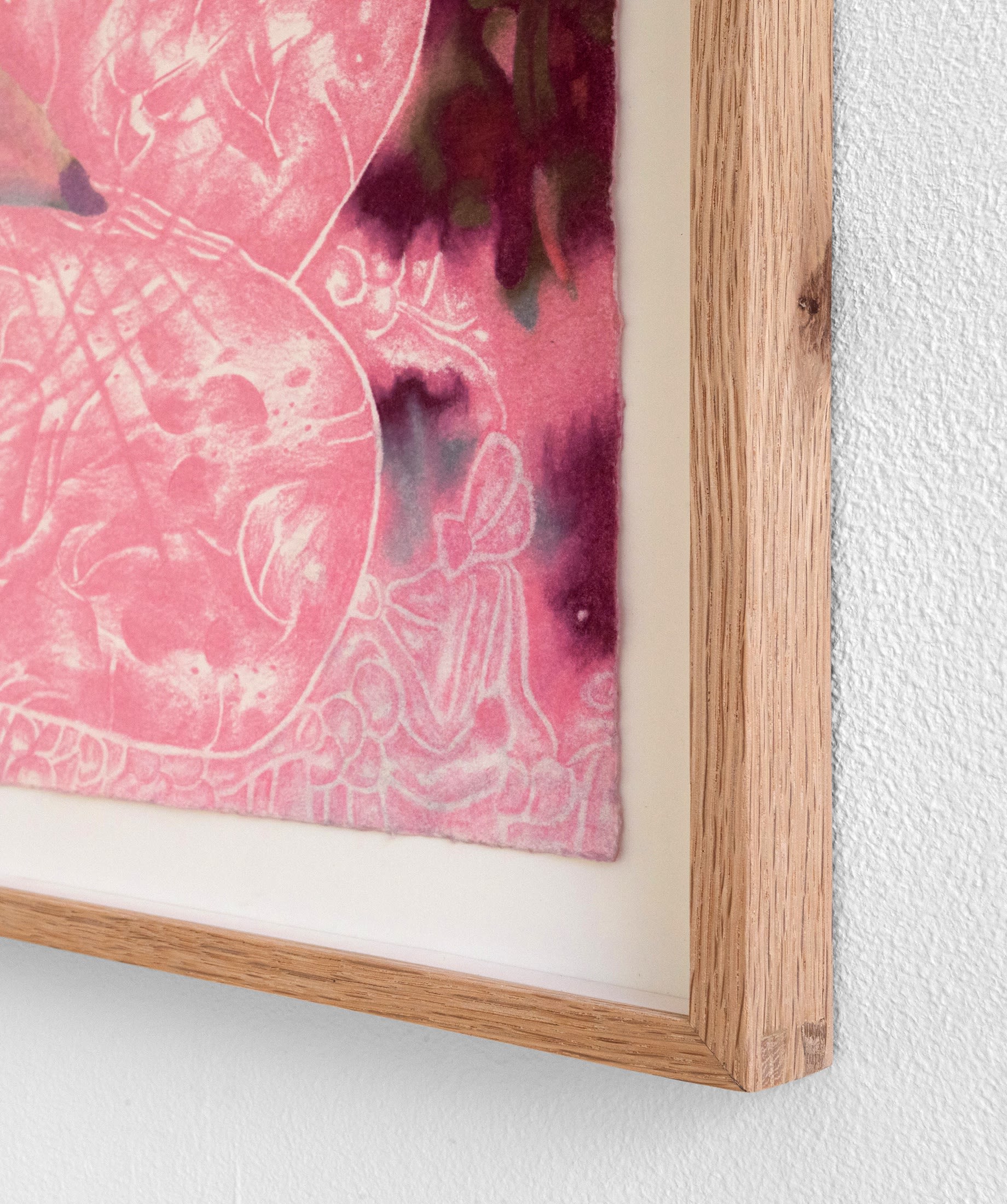 Clara Busch, Confetti Crush, 2025, pastel on paper, 34.9 x 44.7 cm / 13.8 x 17.6 inches [framed]. courtesy of the artist and OTP Copenhagen.
Clara Busch, Confetti Crush, 2025, pastel on paper, 34.9 x 44.7 cm / 13.8 x 17.6 inches [framed]. courtesy of the artist and OTP Copenhagen.
OTP: Parts of these images feel very fleshy, whilst other sections feel harder like shell or stone, or less concrete and more atmospheric. Is there a certain aspect of the relationship between humans and other organisms that you are most interested in?
CB: I find this a super difficult question to answer for some reason. I’m interested in mutual dependence for sure. The first thing that comes to my mind is that this February I went to a graphical workshop for a week to do lithographs in Hjørring and went for a long walk with my partner at Vesterhavet. All over the beach there was something that looked like clay blood vessels in root like patterns. It looked almost like live action fossils or something. The beach was full of giant natural piles of clay. There was almost no one else there, and in that moment I felt a deep connection to the landscape. I hope it’s not too corny to write something like this, but I guess I also am pretty corny, because I believe that the landscape has transformative power when it comes to healing sorrow or stress.
OTP: Some aspects of these drawings seem to engage with medical imagery. Either because of this, or for another reason, to what extent do you think these images produce an uncanny effect in the viewer?
CB: To me the drawings are not uncanny, but maybe thats just me. It’s not my intention for them to be uncanny or beautiful for that matter. I think it’s more my intention to be fleshy or soft or outside and inside at the same time, I can think like that sometimes when making these drawings.
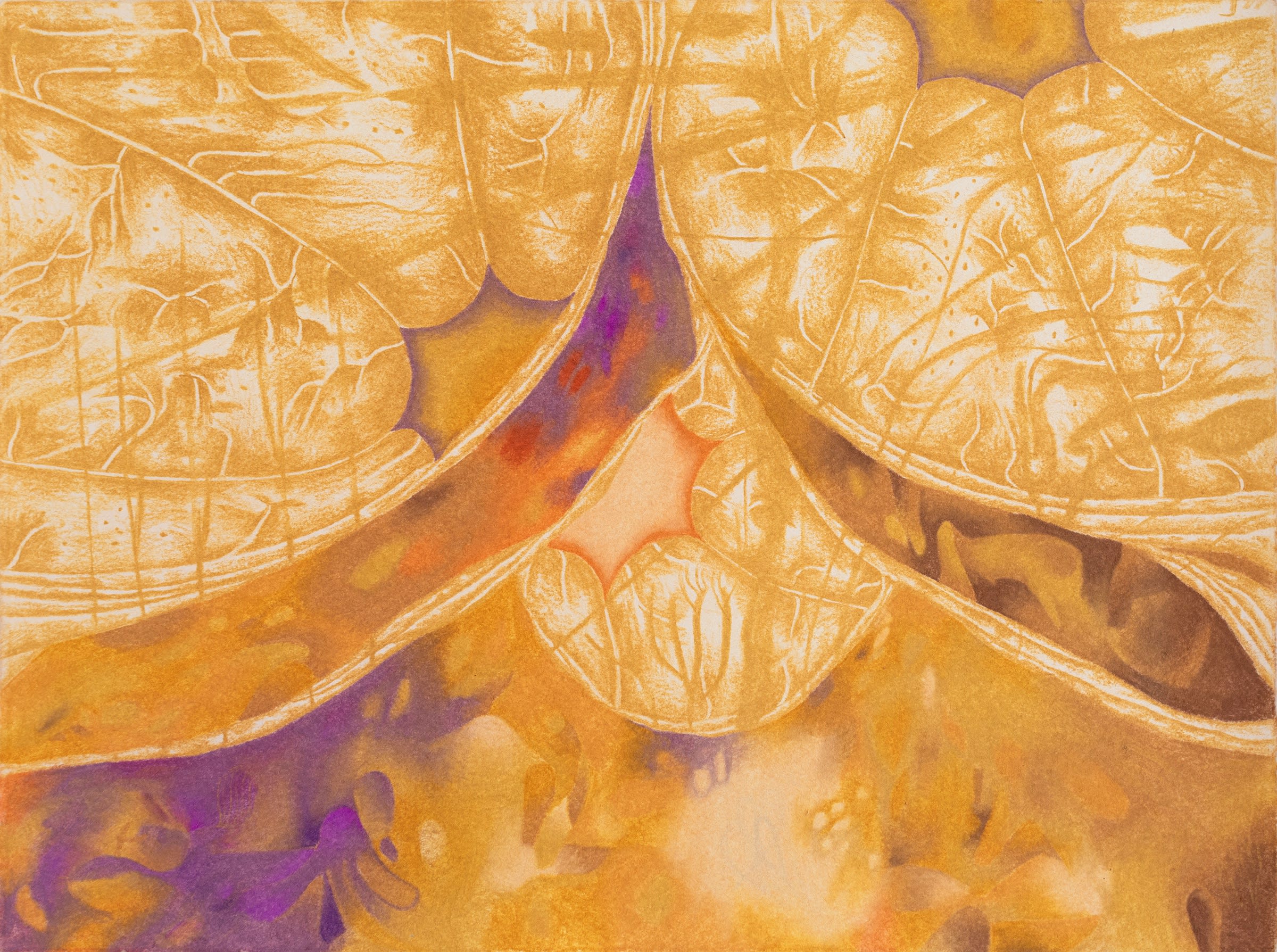 Clara Busch, Stars and Anger, 2025, pastel on paper, 34.9 x 44.7 cm / 13.8 x 17.6 inches [framed]. courtesy of the artist and OTP Copenhagen.
Clara Busch, Stars and Anger, 2025, pastel on paper, 34.9 x 44.7 cm / 13.8 x 17.6 inches [framed]. courtesy of the artist and OTP Copenhagen.
OTP: To what extent do these drawings engage with ideas relating to the landscape?
CB: I feel like I have to say, that while making these drawings I read 'Frankenstein' by Mary Shelley for the first time in my life. I think it’s an absolutely amazing book in trying to describe the sense of seeing and being seen. The thought processes - the way “the monster” comes into philosophical and emotional awareness is deeply moving to me, but especially that there is this sense that “the monster” has emotional troubles by not being able to fully express himself.
I think it’s very possible to do a climate-change-kind-of-reading of this book. About what it means to express oneself when the world around you is constantly changing. I think my drawings work with dissolving a natural perspective because of this very sense of being unable to describe change.
“The monster” in Frankenstein is something living that wants to connect to the human world, he is more natural in the landscape than humans. The carnal as an opposition to the botanical seems to dissolve a bit. He is fleshy and emotional but he was never born or sprang from a seed.
The philosopher Emanuele Coccia wrote that "everything enters and exists from everywhere: the world is an opening, an absolute freedom of circulation — not side by side with, but through bodies and others. To live, to experience, or to be in the world also means to let oneself be traversed by all things". I like the idea that we circulate each other’s bodies and this is what makes us alive. I hope a sense of circulation exists in my drawings.
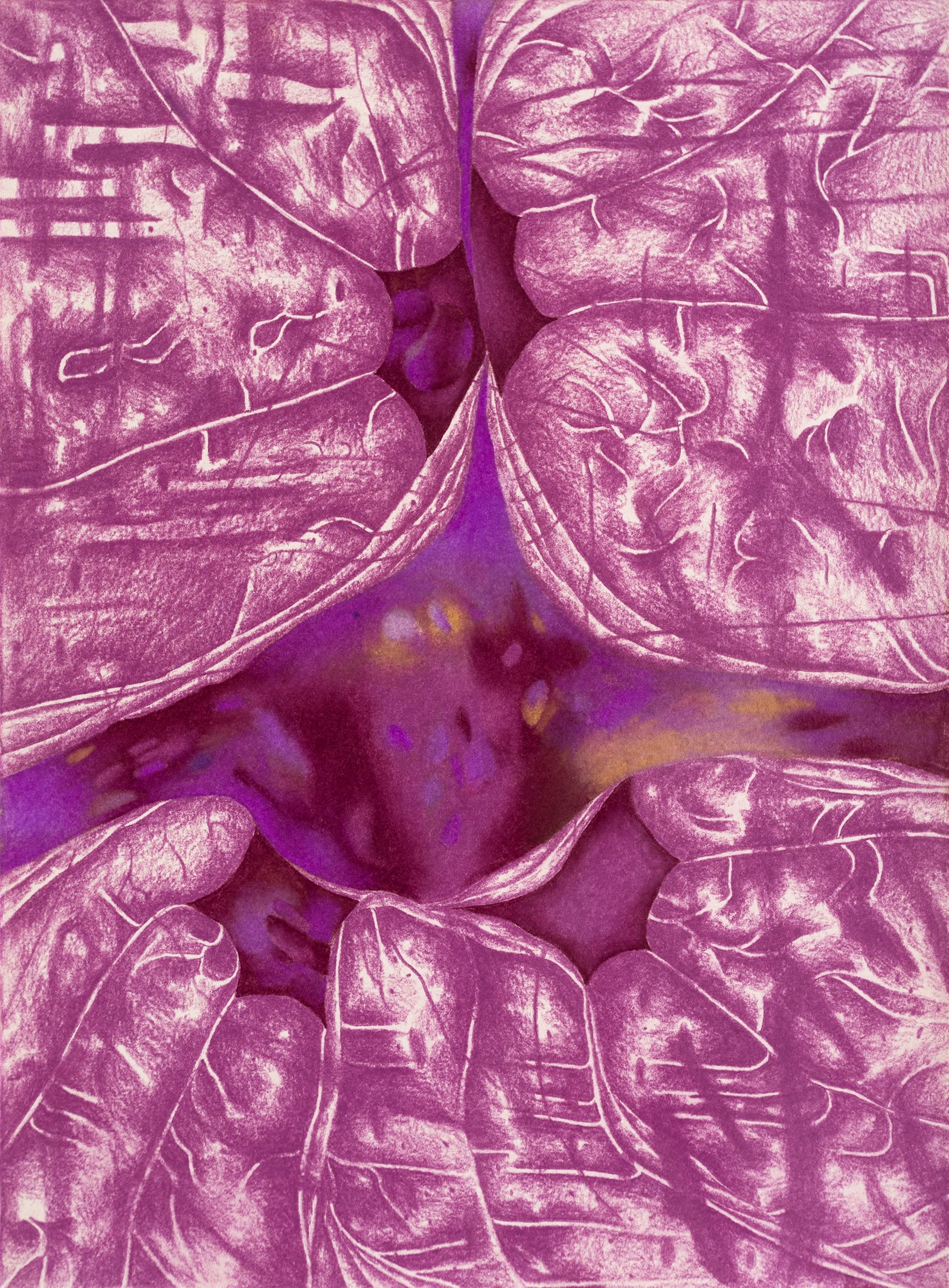 Clara Busch, Inseparable Beginnings, 2025, pastel on paper, 44.7 x 34.9 cm / 17.6 x 13.8 inches [framed]. courtesy of the artist and OTP Copenhagen.
Clara Busch, Inseparable Beginnings, 2025, pastel on paper, 44.7 x 34.9 cm / 17.6 x 13.8 inches [framed]. courtesy of the artist and OTP Copenhagen.
OTP: Do you think it is possible for intimacy to exist between humans and the environment?
CB: I think intimacy is happening all the time in the form of togetherness, attachment and companionship. I think specific environments can for sure provide this. When I was on an exchange semester in the northern part of Norway, I felt more aware of the environment than usual, because I felt very alone and because the environment was very different from my usual one in Copenhagen. I encountered the embroidery works of Sámi artist Britta Marakatt-Labba at Nordnorsk Kunstmuseum. Her work has meant a lot to me since. To me her works show very well that this kind of intimacy exists.
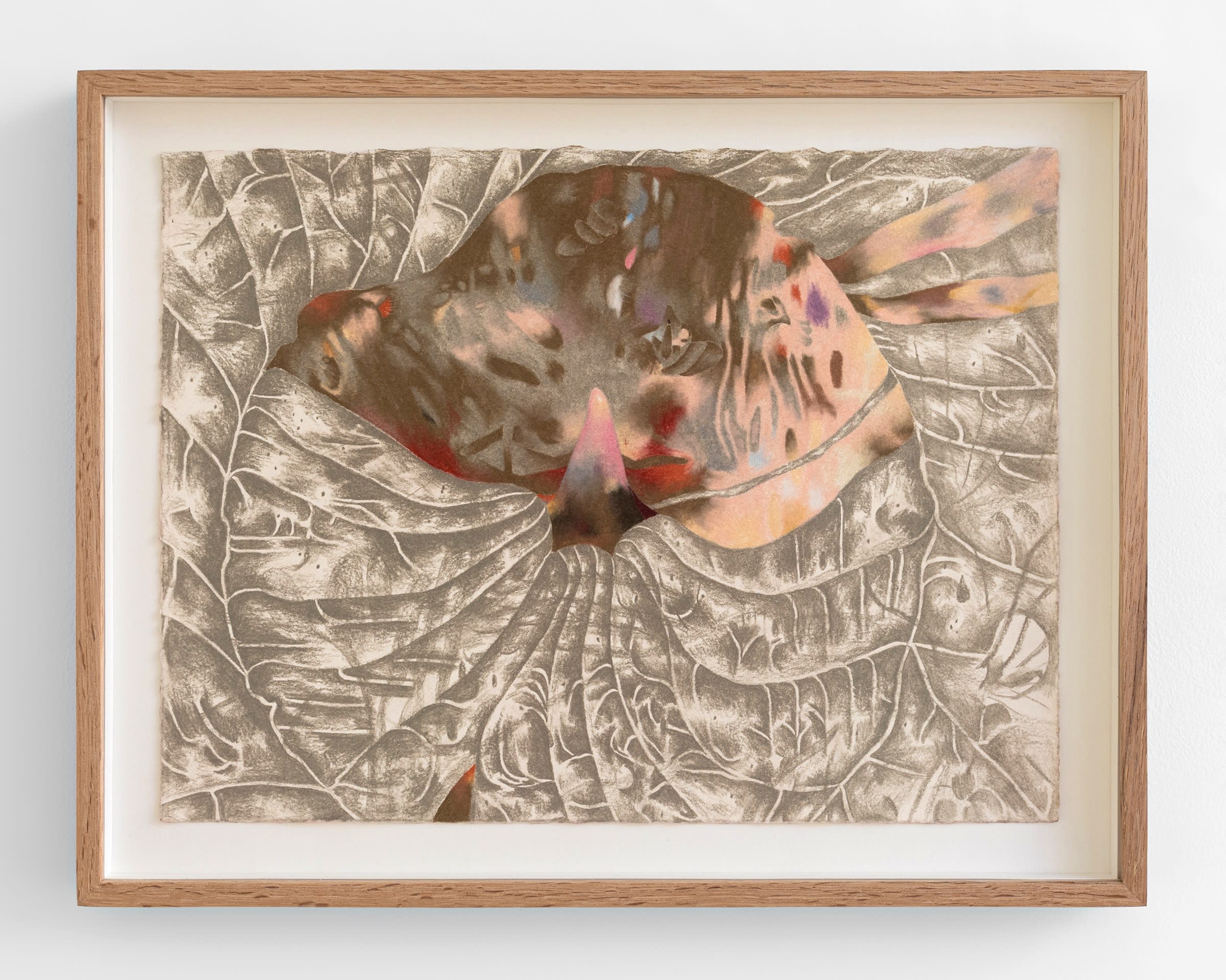 Clara Busch, Pulses, 2025, pastel on paper, 34.9 x 44.7 cm / 13.8 x 17.6 inches [framed]. courtesy of the artist and OTP Copenhagen.
Clara Busch, Pulses, 2025, pastel on paper, 34.9 x 44.7 cm / 13.8 x 17.6 inches [framed]. courtesy of the artist and OTP Copenhagen.
OTP: Many of these works seem to show openings or clearings from one layer or realm into another. What is the relationship between internal and external space in these works?
CB: I think what appears to be the furthest away in the drawings, if you talk about space, is somehow also what appears to be nearest. I think this is a way to try and talk about internal and external space. I find myself lacking the words to describe this properly somehow.
When I was younger, I was really drawn to surrealist artists like Leonora Carrington, and I still am. I’ve always been fascinated by the way she constructs spaces within a single image, like multiple worlds coexisting. For a long time, I noticed people would describe certain artworks as “kind of surreal,” even when those works didn’t fit into surrealism in a traditional art historical sense. I never fully understood what they meant, it seemed like they were reaching for the only word that came close to describing something otherwise hard to explain. I’ve heard sentences like that tons of times. I think it's because there’s a lack of vocabulary when things aren’t directly tethered to “reality.” I've wondered for a while: if it’s not surrealism, then what is it? I think the answer requires more space than this interview provides, but one place to look for a language to describe images that feel dreamlike or surreal or abstract is the body.
I really like words like tissue, chamber, nerve, skeletal, cavernous, fleshy, blurred, soft, fragmented and sticky.
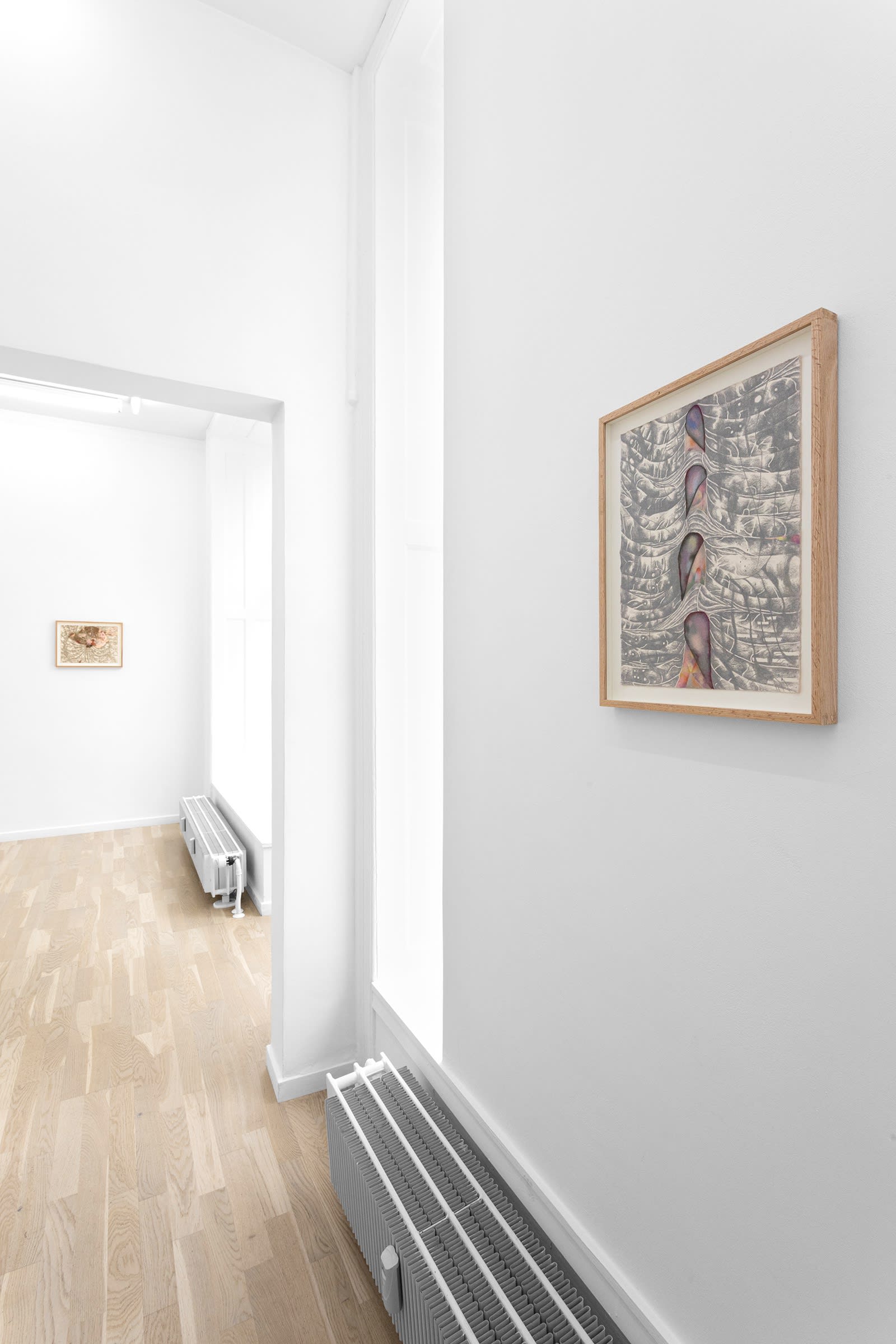 Clara Busch, Chests, installation view, 2025, OTP Copenhagen. courtesy of the artist and OTP Copenhagen.
Clara Busch, Chests, installation view, 2025, OTP Copenhagen. courtesy of the artist and OTP Copenhagen.
OTP: How relevant are ideas of the spiritual or the transcendent to your drawings?
CB: Again, a very big question! I do think the spiritual or transcendent is deeply relevant to my drawings, but it’s not always easy to articulate how that influence manifests in the work. I wouldn’t necessarily describe my practice as overtly spiritual, but I believe that intuition, emotion, and a sense of unseen forces play a role. I’m drawn to the idea that the world offers signs or subtle guidance, and I’m open to those moments, whether they come through dreams, patterns, or emotional intensity.
I also think that when you're in a deeply emotional or reflective state, your senses and awareness can feel heightened, almost in a supernatural way. The drawings are less about illustrating a specific spiritual idea, and more about tapping into an energy or mood that can't be fully explained.
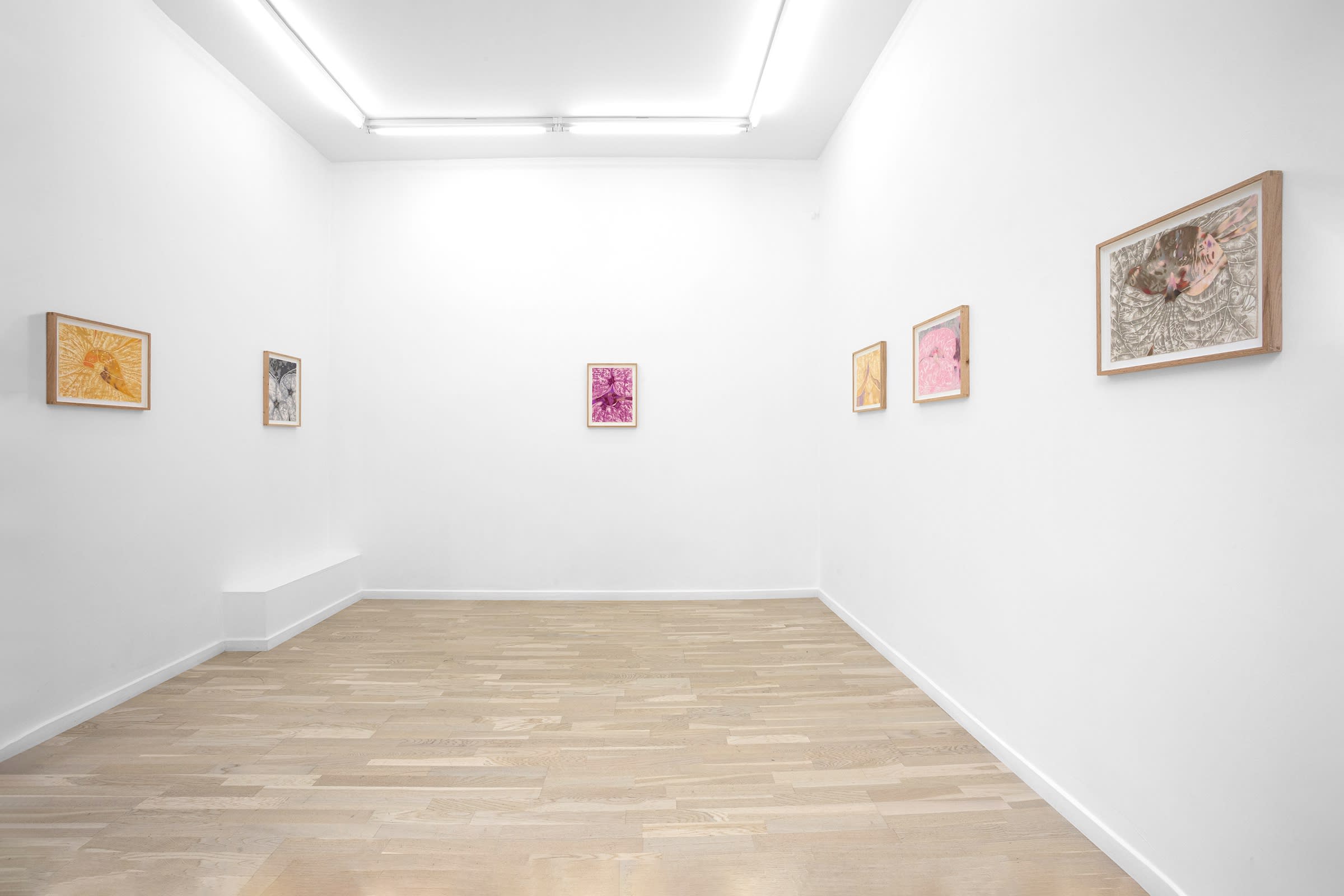 Clara Busch, Chests, installation view, 2025, OTP Copenhagen. courtesy of the artist and OTP Copenhagen.
Clara Busch, Chests, installation view, 2025, OTP Copenhagen. courtesy of the artist and OTP Copenhagen.
Clara Busch (b. 1991, Copenhagen; DK) lives and works in Copenhagen, Denmark. The artist graduated from the MFA programme at the Royal Danish Academy of Fine Art (Copenhagen; DK) in 2022 after completing her BFA at the Royal Danish Academy of Fine Art (Copenhagen; DK) in 2018. Recent exhibitions include: Chests at OTP Copenhagen (Copenhagen; DK), Ghostly Remnants at ODP3 (Copenhagen; DK), Softness and its bodies at Nikolaj Kunsthal (Copenhagen; DK). In the summer of 2025, Busch will present a site-specific project in collaboration with Kalmar Art Museum (Kalmar; SE).